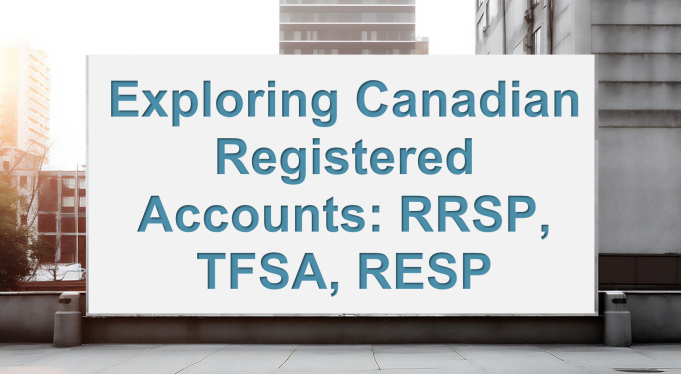In the world of personal finance, Canadian investors are fortunate to have a variety of registered accounts at their disposal. These accounts offer tax advantages and incentives to help individuals save and invest for different financial goals. In this blog, we'll delve into the key differences between some of the most popular Canadian registered accounts, including the Registered Retirement Savings Plan (RRSP), Tax-Free Savings Account (TFSA), and Registered Education Savings Plan (RESP).
Registered Retirement Savings Plan (RRSP): The RRSP is a cornerstone of retirement planning in Canada. It allows individuals to contribute a portion of their income on a pre-tax basis, reducing their taxable income for the year. The funds within the RRSP grow tax-free until withdrawal. However, withdrawals are taxed at the individual's marginal tax rate at the time of withdrawal. RRSPs are particularly advantageous for individuals in higher tax brackets who anticipate being in a lower tax bracket during retirement.
Tax-Free Savings Account (TFSA): The TFSA is a versatile account designed to help Canadians save for any financial goal. Contributions to a TFSA are not tax-deductible, but the real advantage lies in tax-free growth and withdrawals. Any investment gains within the account, as well as withdrawals, are entirely tax-free. TFSA contribution room accumulates over time, allowing individuals to carry forward unused contribution room indefinitely. This makes the TFSA a flexible option for both short-term and long-term savings goals.
Registered Education Savings Plan (RESP): For parents saving for their children's post-secondary education, the RESP is an invaluable tool. Contributions to an RESP are not tax-deductible, but the government offers the Canada Education Savings Grant (CESG), matching a portion of contributions. Investment growth within the account is tax-deferred, and when the beneficiary enrolls in post-secondary education, withdrawals are taxed at their lower tax rate. Additionally, the Canada Learning Bond (CLB) offers extra grants to eligible families.
In the Canadian financial landscape, registered accounts play a vital role in helping individuals achieve various financial objectives. Each account type has its own unique advantages, catering to specific needs and goals. Whether it's saving for retirement, education, disability-related expenses, or simply growing wealth tax-efficiently, these registered accounts offer Canadians a range of options to secure their financial future. Understanding the differences between RRSPs, TFSAs, RESPs, and other registered accounts empowers individuals to make informed decisions aligned with their financial aspirations.
Take Care,

Disclosure: The analyst(s) responsible for this report do not have a financial or other interest in the securities mentioned.






Comments
Login to post a comment.